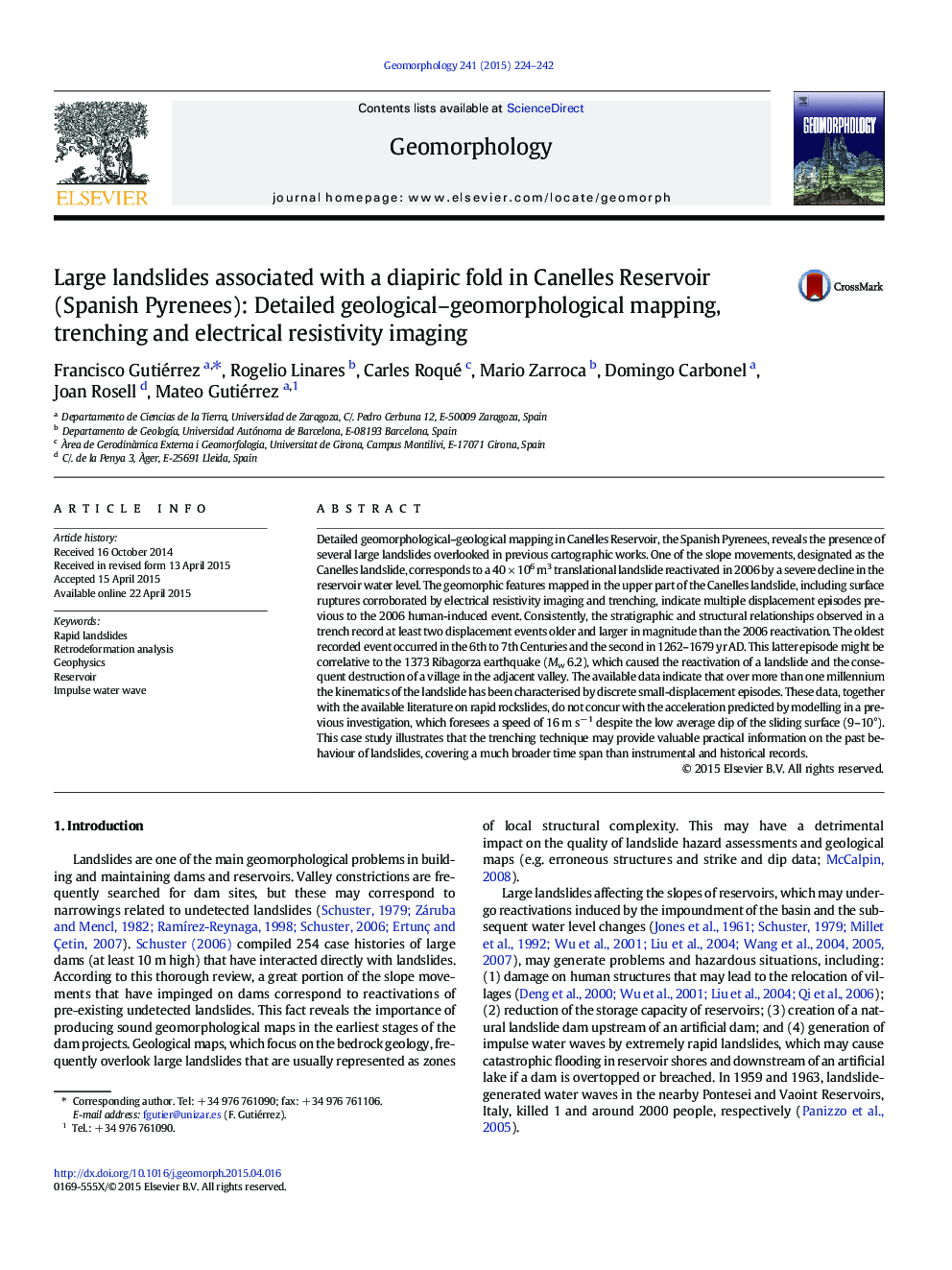| کد مقاله | کد نشریه | سال انتشار | مقاله انگلیسی | نسخه تمام متن |
|---|---|---|---|---|
| 6432150 | 1635408 | 2015 | 19 صفحه PDF | دانلود رایگان |

- Geomorphic mapping reveals large landslides in Canelles Reservoir.
- Trenching and dating indicate multiple displacement events in the Canelles landslide.
- Colluvial wedge records a reactivation ascribable to the 1373 Ribagorza earthquake.
- Trenching provides valuable practical information on the past behaviour of landslides.
Detailed geomorphological-geological mapping in Canelles Reservoir, the Spanish Pyrenees, reveals the presence of several large landslides overlooked in previous cartographic works. One of the slope movements, designated as the Canelles landslide, corresponds to a 40 Ã 106 m3 translational landslide reactivated in 2006 by a severe decline in the reservoir water level. The geomorphic features mapped in the upper part of the Canelles landslide, including surface ruptures corroborated by electrical resistivity imaging and trenching, indicate multiple displacement episodes previous to the 2006 human-induced event. Consistently, the stratigraphic and structural relationships observed in a trench record at least two displacement events older and larger in magnitude than the 2006 reactivation. The oldest recorded event occurred in the 6th to 7th Centuries and the second in 1262-1679 yr AD. This latter episode might be correlative to the 1373 Ribagorza earthquake (Mw 6.2), which caused the reactivation of a landslide and the consequent destruction of a village in the adjacent valley. The available data indicate that over more than one millennium the kinematics of the landslide has been characterised by discrete small-displacement episodes. These data, together with the available literature on rapid rockslides, do not concur with the acceleration predicted by modelling in a previous investigation, which foresees a speed of 16 m sâ 1 despite the low average dip of the sliding surface (9-10°). This case study illustrates that the trenching technique may provide valuable practical information on the past behaviour of landslides, covering a much broader time span than instrumental and historical records.
Journal: Geomorphology - Volume 241, 15 July 2015, Pages 224-242